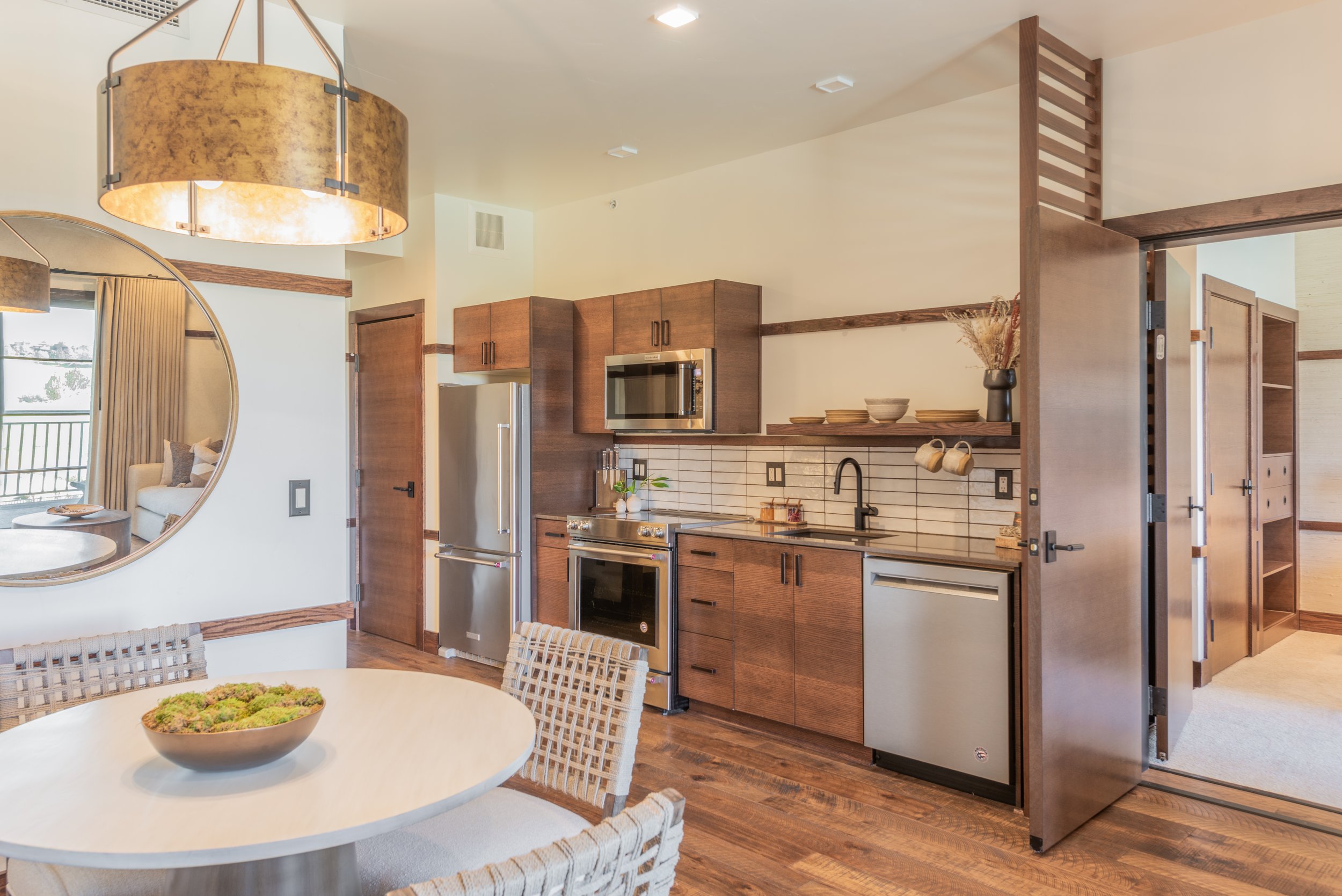Home sellers are often told to make upgrades to their house before they sell. But when is the best time to get those home improvements underway, in terms of scoring the best ROI?
It’s a tough balance to strike. After all, the sooner you remodel your kitchen or retile the bathroom, the more you’ll get to enjoy it all yourself. But if you make those improvements too long before you sell, you risk them looking run-down and outdated by the time you want to market your home. So, when’s the right time to give the green light?
If you’re agonizing over such questions, we can end your misery now—in a good way! Here’s how far in advance of listing your home you should do certain home improvements, so they’ll still look fresh enough to fetch top dollar.
7 to 10 years out
Well, you’re quite a planner, aren’t you? That’s cool … we’ll play the long game with you. Here are upgrades you can safely undertake when you still have significant time until your sale.
1. Redo your landscaping
This is truly one of the few housing projects that gets better with age, since shrubs and trees only improve as they mature. And, bonus: It’s likely that it will never look dated, says Lisa Shiroff of Leafy Green Landscaping in Buena, NJ. However, she cautions, think twice about unique or difficult-to-maintain items if you are concerned with resale value—we’re talking elements like a meditation nook, bocce ball court, or koi pond.
“Most people are not willing to invest the time, energy, or finances to maintain those areas, so keep your additions relatively mainstream and user-friendly,” Shiroff says.
2. Update the garage door
Believe it or not, updating your garage door is the top upgrade you can make in terms of return on investment.
“Curb appeal is key when you’re getting ready to sell your home, and garage doors can dramatically improve the look of your home,” says Matt Edstrom of GoodLife Home Loans in Laguna Hills, CA. Since garage doors can last for up to 40 years, this is an update you can enjoy right now, without worrying about taking a depreciation hit.
3. Replace your roof
If your roof is more than 20 years old and you plan on selling, you may want to replace it, suggests Taylor Willson, owner of Willson Home Inspection Inc. in Tampa, FL. For one thing, you may receive immediate savings from your insurance company, he says, and beyond that, “A newer roof is a great selling point.” Choose a hardy material, like concrete tiles or asphalt shingles, that have a long useful life.
4. Keep up on repairs
Repairs should have a permanent spot on your “to do” list. If it’s broke, then, yes, please fix it.
“Don’t put off repairs while you wait for the optimum time,” says Cristina Miguélez, remodeling specialist at Fixr.com. “They help your home retain value and can keep a small problem from becoming exponentially bigger.”
5 years out
This is a good time to start thinking about big-ticket items that will affect your resale and that you won’t want to pay for all at once. Here are some to consider.
1. Replace major systems
We’re talking HVAC systems, plumbing—anything whose average life expectancy is relatively long, and where you want your listing to showcase that these key systems are less than five years old. Replacing them now allows you to enjoy the improved operation and potential energy savings, while avoiding a concession in the sale price when the time comes, Willson says.
2. Check on anything with a warranty
This is also a good time to do a check on any items that have a current warranty—such as windows and appliances—while they are still covered.
3. Switch out your front door
Another important element of “curb appeal,” your front door can really make your house pop, as well as potentially increase your energy efficiency. Front doors can last for decades, but they are also exposed to the elements, so this is a good time frame to allow you to enjoy the aesthetics and energy savings, without running the risk that it will look too weathered come sales time.
2 years out
Two years is nothing in a home’s history, so it’s time to really start getting serious. Here’s what to do to start prepping for a relatively imminent sale.
1. Reno the kitchen or bathroom
This can be subjective, but you’re probably safe doing an overhaul in this time frame if you are hoping to get some personal enjoyment out of your updates. Miguélez suggests, however, that you pick your decor carefully to avoid being stuck with an upgrade that’s already dated.
“A ‘trend’ is something that’s predicted to last roughly 10 years, so your safest best is to find a look that’s been on the upswing for roughly two to three years,” Miguélez explains. “That means it will look relevant for a while, rather than something that is already five years old and potentially nearing its expiration date.”
Dawson recommends seeking the opinion of a local real estate agent, who can steer you to cost-effective updates that will increase the value of your home without over-improving it. And, she says, beware of DIY.
“If you don’t have extensive prior experience, hiring a professional is going to be cheaper in the long run, because the DIY look is unappealing to your potential buyer.”
2. Get to organizing
This is also a good time to start cleaning out storage areas, closets, cabinets, the garage, the attic—anyplace you have an accumulation of stuff, Dawson says. Your future self will thank you for getting this time-consuming project out of the way now.
3. Have a home inspection
Very few sellers do this, but it’s smart to have your home professionally inspected right about now, so you won’t run into any nasty surprises when selling time rolls around.
“It is always less expensive to repair items before you get into negotiations with a buyer,” Dawson points out.
1 year or less
It’s crunch time, and now is the time to attend to all the high-traffic areas, as well as make improvements that will freshen up your listing.
1. Redo flooring
Pets and kids can scratch up your floors quickly, so wait as long as you can before refinishing floors. Replace carpet, too, if it’s dingy, and especially if it has pet odors.
2. Roll on a fresh coat of paint
Walls get dinged up constantly, so painting right before putting your house on the market can really make it sparkle. It’s also a quick job that you can get done in a week or two.
3. Replace all your accessory items
These are things like bedding, throw pillows, chair cushions, patio furniture, shower curtains, plumbing fixtures, cabinet pulls—all the embellishments that provide the “lipstick” for the foundational elements. Shop those sales and switch out everything you can, Dawson recommends.
“You want the house to shine like a new penny, not appear to be well-loved,” she says.
Related Links
If there is a home that you would like more information about, if you are considering selling a property, or if you have questions about the housing market in your neighborhood, please reach out. We’re here to help.
Search Homes in Colorado
Search Homes in North Carolina
Search Homes in Oklahoma
Search Homes in Oregon
Search homes in Minnesota














